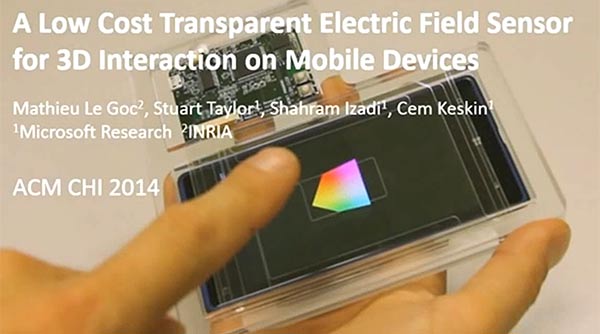Nokia, now part of Microsoft, has been developing 3D Touch technology which is expected to debut on a flagship smartphone coming out later this year. The device, codenamed the 'Lumia McLaren', represents Microsoft's latest efforts in exploring the concept of integrating Kinect-like motion detecting features into Windows Phone. This is a unique aspect other companies have yet to include on a mobile device so far, reports The Verge.
The motion controlled 3D touch smartphone will launch under the Lumia brand and will be heading to various US carriers later this year, according to sources familiar with the company's plans. Renowned tipster @Evleaks was the first to announce the existence of the Nokia McLaren and believes it to be the successor to Nokia's Lumia 1020, it sports a similar rear casing and features a powerful camera.

Incorporating 3D touch technology could be a key differentiator for Windows Phones compared to iOS and Android devices, and hopefully give the company a way to gain more users for its mobile platform. The McLaren device is said to allow users to hover their finger over the screen to interact with applications without the need to touch the display, something that Nokia has been developing for the past number of years.
Other intuitive features include:
- the ability to answer calls by holding the device to your ear
- enabling speakerphone when you place your phone down on the table during a call
- hanging up calls by placing the device into a pocket
The above will be possible thanks to the hardware sensors in the device. The device is said to be able to understand the user's calling and response preferences and what they want based on lighting and positioning.
According to The Verge, Microsoft also has some bold long-term plans to use its 3D Touch technology to simplify device interaction as much as possible. For example, the company wishes to be able to "remove buttons like the power button, so phone owners can simply grip their device to power it on." It is also planning to allow the device to detect how it's held by grip, in order for the 3D Touch-enabled device to block orientation switches when for example, the user is lying down in bed. The sides of the smartphone will also be used to access the zoom feature of the camera when users drag their fingers along the sides and interact with the OS.
Take a look at the video below from Microsoft Research and their work on 3D sensing in smartphones.
We have a feeling that Microsoft is working hard to make sure the 3D Touch feature works well out of the box, and we are certainly excited to see the upcoming Nokia McLaren. Amazon is also rumoured to be launching a 3D smartphone later this month. What are your thoughts on 3D Touch features on future smartphones? What application benefits do you think it can bring to mobile device UIs? Let us know in the comments below.













